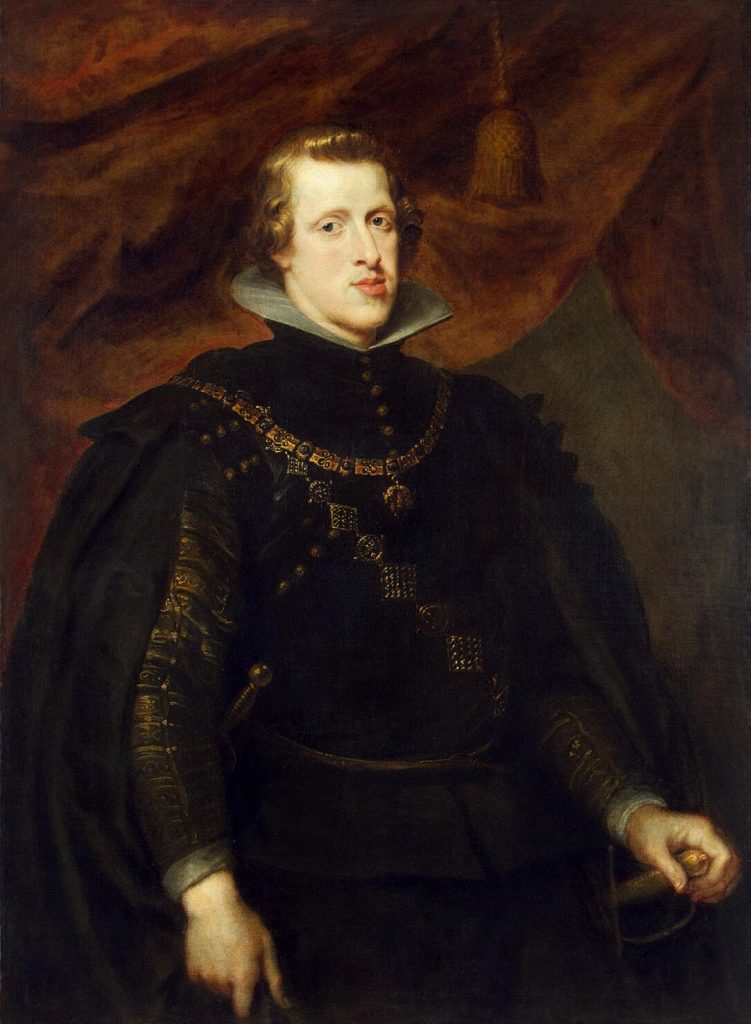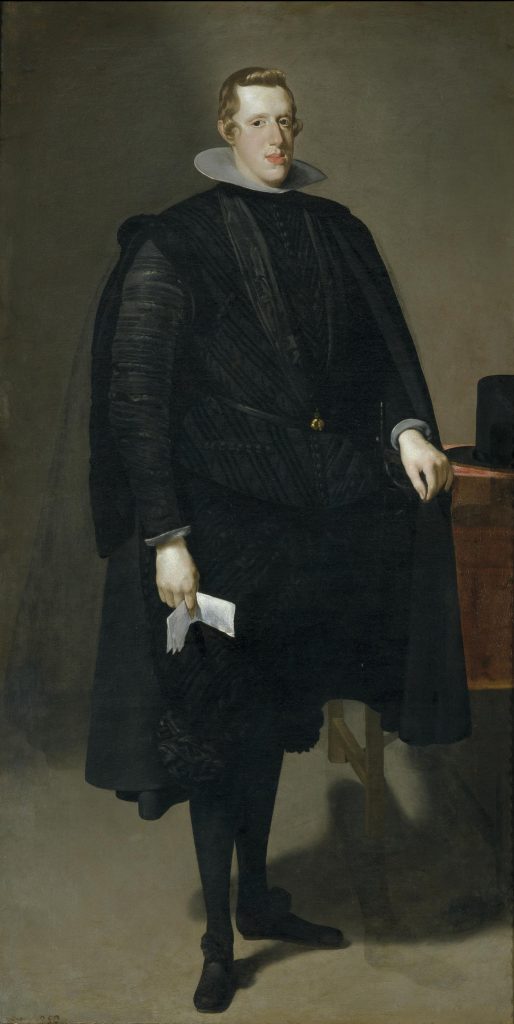Way back in the 1620s, King Philip IV got some portraits done (as a king will). As king of Spain, Philip needed to be able to project a certain image–the typical absolutist powerful, militarily-strong-but-also-religious, all-around MVP that was typical of many royal portraits of the day.
For most of his portraits, Philip IV called in his favorite court painter and castle diplomat/almost-nobleman, Diego Rodríguez de Silva y Velázquez–better known today as simply Velázquez. Velázquez, born in 1599 and and appointed “Painter to the King” in 1623, was closer to Philip IV and the royal family than most painters of the day allowed themselves to dream of. He might have been the closest thing Philip IV ever had to a friend, seeing how Philip allowed Velázquez a great deal of court-related, non-painterly responsibilities despite his non-noble status and allowed him to paint the royal family in a way no other court painters were (see the speculations around his most famous painting, Las Meninas). And the fact that friends are sometimes a luxury that absolute monarchs don’t really get to enjoy.

Camaraderie aside, Philip IV and his family (as well as his court) preferred Velázquez’s work to that of most other artists. His defining 1623 portrait “Philip IV” established Velázquez as the main painter to the king, and Philip truly seemed to enjoy everything Velázquez produced. There was nothing to question about Velázquez’s style–that is, until Peter Paul Rubens came calling.

Rubens, born in 1577, was already well-established as a painter and diplomat in Flanders (modern-day Belgium) at the time of his visit to Spain. As Flanders was part of the Habsburg Empire at the time, Rubens, as both a painter and diplomat, struck out for Spain as part of a peace mission. Rubens brought with him a Flemish sense of painting, which showed itself as radically different than Velázquez’s in Rubens portrait of Philip IV.
Take a look at them both. Doesn’t it look like a Facebook profile picture (Rubens) next to a tagged photo (Velázquez)?


What accounts for the difference in depictions? Well, Rubens was definitely more of one to work in allegory and soft color into his paintings (as evidenced by the series he painted for Marie de Medici). But seeing as Philip IV functioned as almost the most absolute of the absolutists (governmental power was centralized around his person more so than in other regions at the time), Rubens probably decided that cutting out other allegorized figures was probably a good idea. He infused the painting with deep rose hues, though, almost Photoshopping in comparison to Velázquez’s painting.
Velázquez’s 1623 portrait looks incredibly reserved, statuesque, and almost vacant when compared with Rubens’ more active, warm painting. To a modern viewer, the question why would Philip IV continue to employ Velázquez when Rubens was around? immediately springs to mind. Simply speaking–the Spanish style of painting was different, and Velázquez’s royal portraits sought to illustrate the centralized power of the ruling family. In nearly all the paintings Velázquez painted of the royals, he tended to depict them much like the the above–more imposing, less active, and with relatively vacant facial expressions. Juxtaposed against the plain background, Philip IV is shown as the literal embodiment of majesty. He looks down on the viewer, engulfed by the robes of state. No dramatizing is needed, in Velázquez’s sense–here is the embodiment of the power of of Europe. His vacant gaze might even hint that he’s operating on another level, a mentally higher level than that of the common folk.
.jpg)
While Rubens’ painting is more active and akin to how other rulers of Europe were stylizing themselves at the time, Velázquez’s reflects the uniquely Spanish attitude towards the monarchy. Rubens, however, did give Velázquez a run for his money–his 1628 equestrian portrait of Philip IV (now lost, but copies survive) inspired Velázquez to challenge himself as a painter, the result being the above equestrian portrait from 1634-35. It’s more simple than just the story of two paintings that are akin to the profile-vs.-tagged-photo comparison–it’s a story of monarchical power, Baroque artistic tradition (and beyond), and differing European attitudes toward both.
Which begs the question–if you were Philip IV and you had Facebook–which would you set as your profile picture?
Are you an art history nerd who’s interested in getting kids excited about art history? Check out more about what we do at the Art Docent Program here!
Want past blog posts to fuel your art historical nerdiness? Check them out here!







